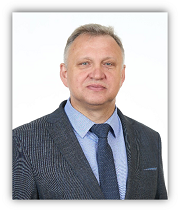Isolation of rotavirus from a sick calf and optimization of its cultivation parameters
https://doi.org/10.47612/2224-168X-2021-2-12-17
Abstract
The article is devoted to the isolation of rotavirus from a sick calf and optimization of its cultivation parameters in the transplanted lines of homologous and heterologous cell cultures. Rotavirus isolate was isolated in MDBK cell culture, which was confirmed in polymerase chain reaction and neutralization reaction, from the faeces of a sick calf. A method of culturing the isolated isolate in homologous (MDBK) and heterologous (SPEV) cell culture has been worked out. The cultivation of rotavirus in an alkaline medium and its treatment with trypsin at a concentration of 20 mcg/ml and the introduction of trypsin into a supportive medium (15 mcg/ml) led to an increase in the titer of the virus to 8.0–8.25 lg TCD50/ml. It was found that the accumulation of isolated rotavirus in the rollers led to an increase in the yield of the virus and an increase in its titer to 8.5 lg TCD50/ml. The isolated rotavirus isolate has antigenic properties and leads to the formation of an immune response when administered intramuscularly to rabbits.
About the Authors
A. A. ZgirovskayaBelarus
Yu. I. Tyapsha
Belarus
O. V. Dubanevich
Belarus
T. A. Zuykevich
Belarus
N. I. Kostyuk
Belarus
V. I. Gerasimenko
Belarus
References
1. Выделение и характериатика изолятов ротавируса крупного рогатого скота / Г. С. Скитович [и др.] // Научные основы в области охраны здоровья животных / ФГУ «ВНИИЗЖ» // Ветеринарная патология. – 2006. – № 4. – С. 170–172.
2. Дороненкова, Г. Н. Выделение ротавируса крупного рогатого скота / Г. Н. Дороненкова, С. А. Чупин, А. М. Тимин // Биотехнология. – 2004. – № 4. – С. 47–52.
3. Повышение репродукции ротавируса крупного рогатого скота штамм 101 в перевиваемой культуре клеток / О. Н. Окулова [и др.] // Труды федерального центра охраны здоровья животных. – Владимир, 2005. – Т. 3. – С. 194–202.
4. Рамишвили, Л. Г. Серийное пассирование ротавируса крупного рогатого скота в гетерологичной культуре клеток / Л. Г. Рамишвили, Г. Г. Рухадзе, Е. А. Непоклонов // Вопросы вирусологии. – 1991. – № 6. – С. 521–523.
5. Сергеев, В. А. Ротавирусы. Вирусы и вирусные инфекции / В. А. Сергеев, Е. А. Непоклонов, Т. И. Алипер. – М. : Библионика, 2007. – С. 365–369.
6. Clark, B. Tripsin enhancement of rotavirus infectivity mechanisms of enhancement / B. Clark, J. R. Roth, M. L. Clark // J. Virol. – 1981. – V. 39. – P. 816–822.
7. Cell culture propogation of rotaviruses / L. J. Saif [et al.] // Tissue culture methods. – 1988. – V. 11, № 3. – P. 152–153.
Review
For citations:
Zgirovskaya A.A., Tyapsha Yu.I., Dubanevich O.V., Zuykevich T.A., Kostyuk N.I., Gerasimenko V.I. Isolation of rotavirus from a sick calf and optimization of its cultivation parameters. Epizootology Immunobiology Pharmacology Sanitation. 2021;(2):12-17. (In Russ.) https://doi.org/10.47612/2224-168X-2021-2-12-17














